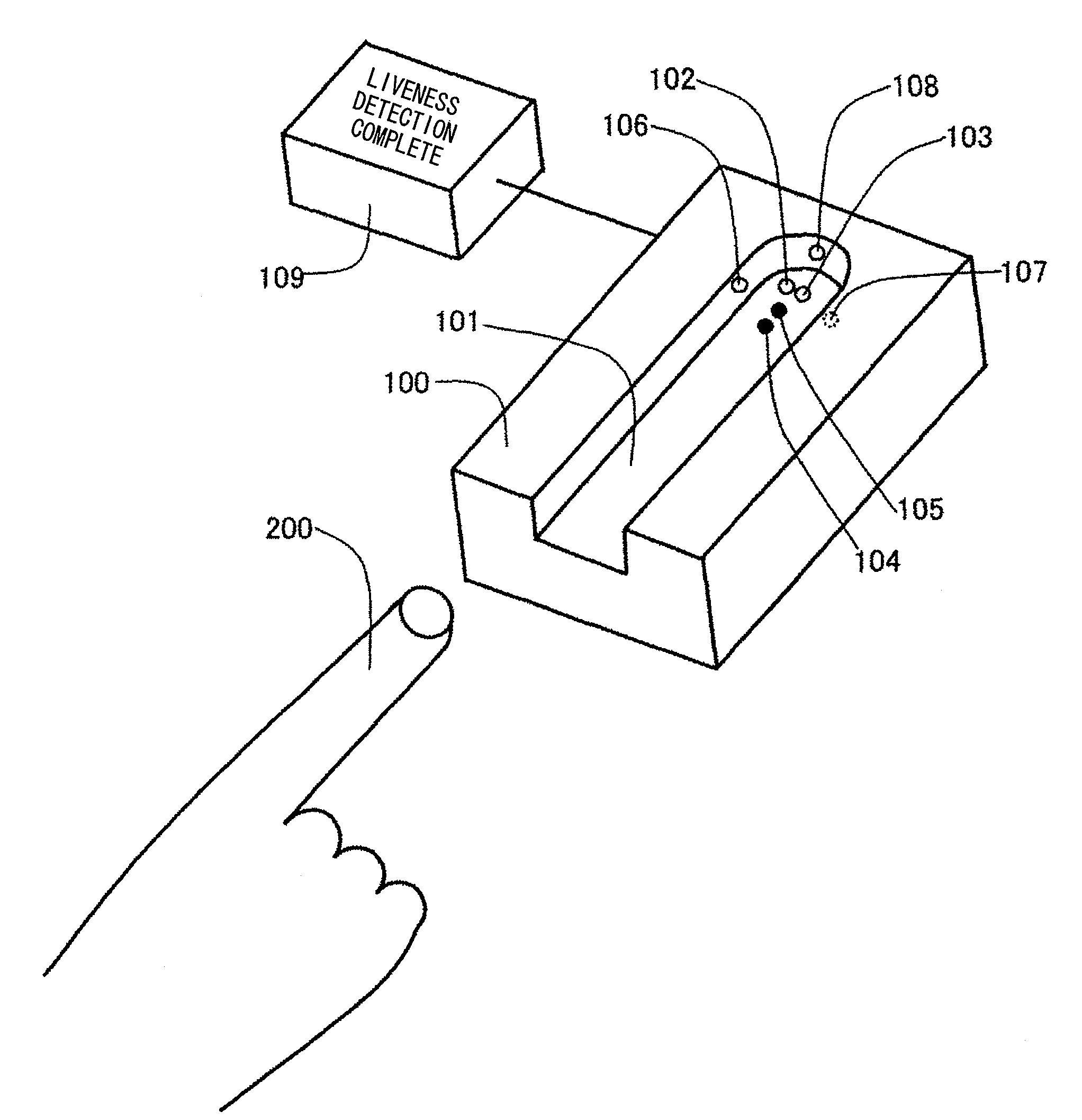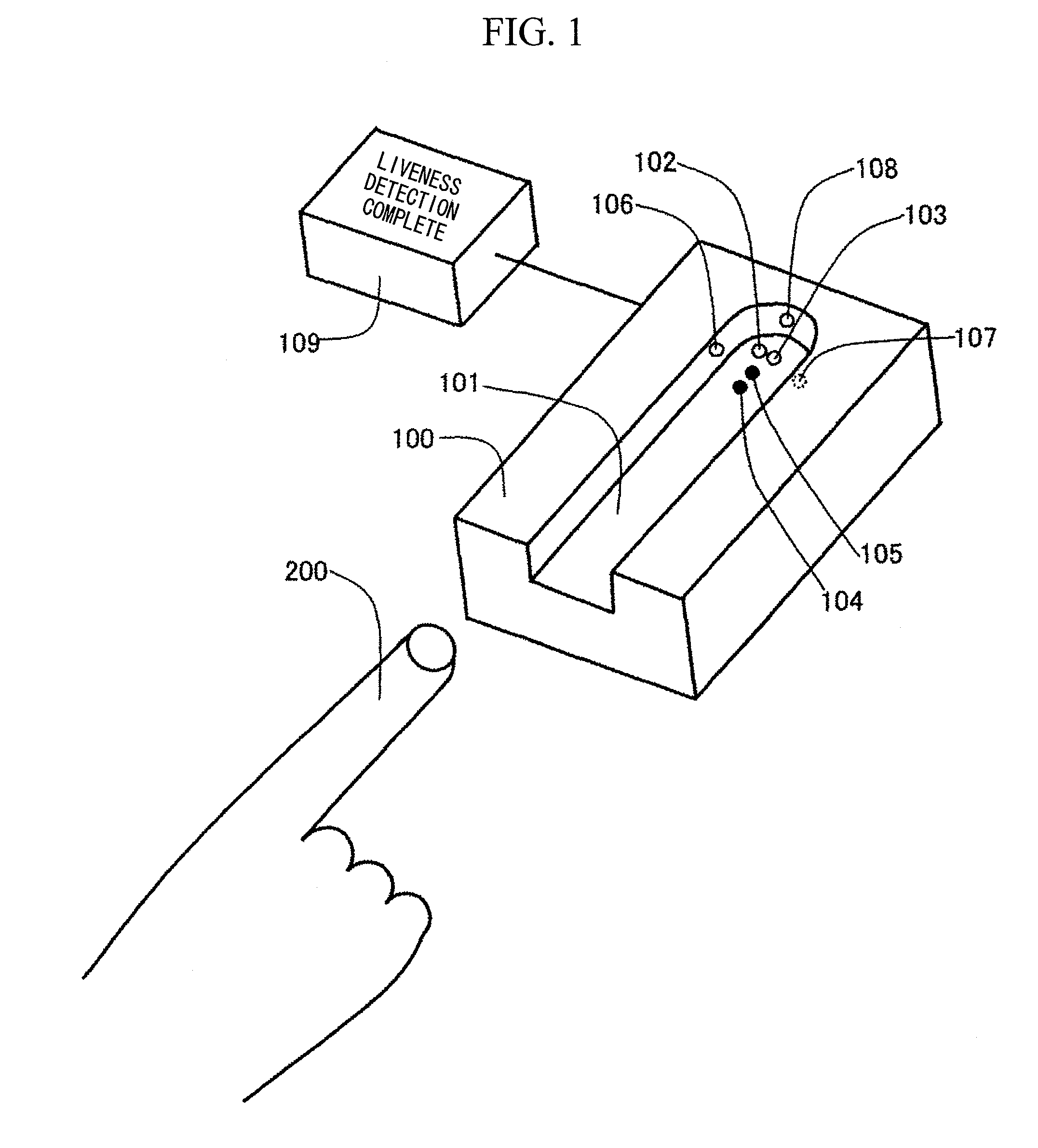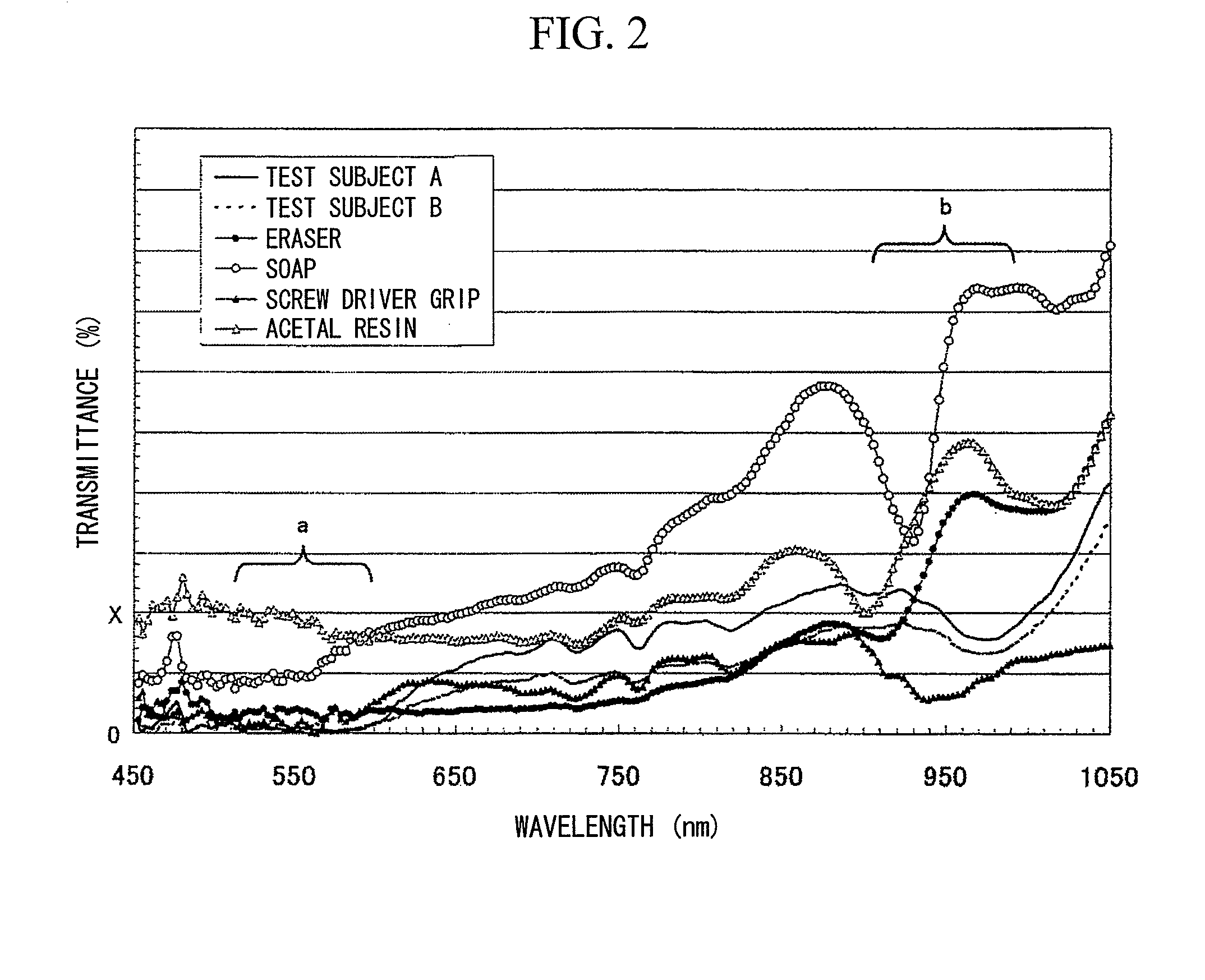Biometric identification apparatus
- Summary
- Abstract
- Description
- Claims
- Application Information
AI Technical Summary
Benefits of technology
Problems solved by technology
Method used
Image
Examples
embodiment 1
[0015]FIG. 1 is an external view of a biometric identification apparatus 100 according to an embodiment of the present invention. Light sources 102 and 103, such as LEDs or lasers, are disposed on the bottom surface of a finger placement portion 101 on which a finger 200 for biometric identification is placed. The light sources 102 and 103 are disposed so that the optical axes thereof form lines perpendicular to the bottom surface of the finger placement portion 101. Receiving surfaces of receivers 104 and 105 such as photodiode devices are disposed parallel to the bottom surface of the finger placement portion 101. On side surfaces that are perpendicular to the bottom surface of the finger placement portion 101, there are disposed light sources 106, 107, and 108 such as LEDs or lasers, so that the optical axes thereof form lines perpendicular to the side surfaces of the finger placement portion 101. The optical axes of the light sources 102 and 103 are perpendicular to the optical ...
embodiment 2
[0021]FIG. 6 shows an embodiment in which the biometric identification apparatus of the present invention is incorporated into biometric identification by fingerprint imaging. A fingerprint imaging unit 130 is incorporated into the bottom surface of a finger placement portion 101 of a biometric identification apparatus 120, so that the fingerprint imaging unit 130 does not interfere with the light sources 102, 103, 106, 107, and 108, and the receivers 104 and 105. Identification is made by first placing a finger in the finger placement portion 101, and then by performing determination of liveness detection. Thereafter, by drawing the finger back while lightly pressing the finger against the bottom surface of the finger placement portion 101, an image of the fingerprint can be obtained with the finger print imaging unit 130. In FIG. 6, while the biometric identification apparatus 120 and a display unit 109 are separate from each other, the display unit 109 may be integral with the bi...
embodiment 3
[0022]FIG. 7 shows an embodiment in which the biometric identification apparatus of the present invention is incorporated into biometric identification by vein imaging. A vein imaging unit 150 is incorporated into the bottom surface of a finger placement portion 101 of a biometric identification apparatus 140, so that the vein imaging unit 150 does not interfere with the light sources 102, 103, 106, 107, and 108, and the receivers 104 and 105. Moreover, as light sources for imaging veins, imaging light sources 110 are incorporated into a surface perpendicular to the surface where the vein imaging unit 150 is located. Identification is made by first placing a finger in the finger placement portion 101, and then by performing determination of liveness detection. Thereafter, the imaging light sources 110 are caused to emit light in a state where the finger remains placed on the finger placement portion 101. Thus, an image of the veins of the finger is obtained with the vein imaging uni...
PUM
 Login to View More
Login to View More Abstract
Description
Claims
Application Information
 Login to View More
Login to View More - R&D
- Intellectual Property
- Life Sciences
- Materials
- Tech Scout
- Unparalleled Data Quality
- Higher Quality Content
- 60% Fewer Hallucinations
Browse by: Latest US Patents, China's latest patents, Technical Efficacy Thesaurus, Application Domain, Technology Topic, Popular Technical Reports.
© 2025 PatSnap. All rights reserved.Legal|Privacy policy|Modern Slavery Act Transparency Statement|Sitemap|About US| Contact US: help@patsnap.com



